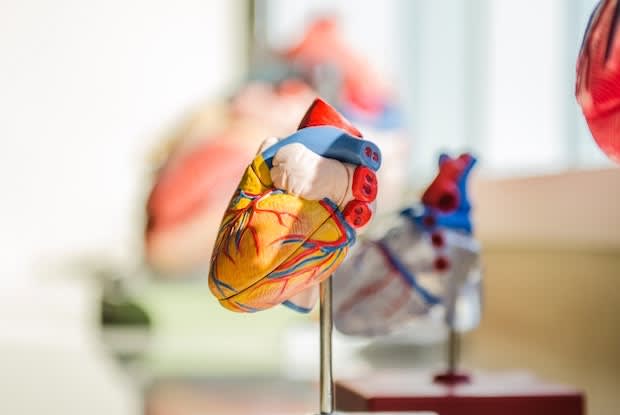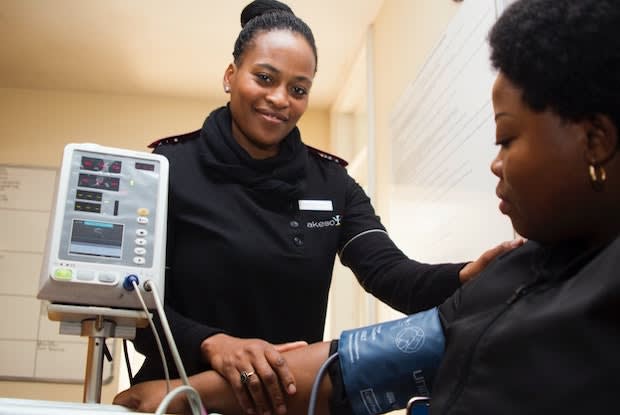Table of Contents
I. Understanding Blood Pressure
II. Causes of High Blood Pressure
Understanding Blood Pressure
Almost half of all Americans will be diagnosed with high blood pressure in their lifetime. [1] This condition may be common, but it is still dangerous and requires treatment. Blood pressure (BP) is the pressure of blood pushing against artery walls. Arteries are part of the circulatory system that carries blood away from the heart to other body parts. If this pressure is too high or too low, then dangerous side effects may occur.
A person’s blood pressure is measured using two numbers called systolic and diastolic. The systolic blood pressure is the measurement of the pressure in your arteries when the heartbeats. Diastolic blood pressure measures the arterial pressure when the heart rests in between heartbeats. This measurement is measured in millimeters of mercury (mm Hg). Normal blood pressure is around 120 (systolic) over 80 (diastolic). [1]
There are several reasons why blood pressure increases, but it can typically be controlled with the proper lifestyle changes and medications. Commonly prescribed high blood pressure medications include Toprol XL (metoprolol XL), Bumex (bumetanide), Benicar (olmesartan), and Aldactone (spironolactone).
High blood pressure (hypertension) is often referred to as a silent killer because it typically does not present symptoms. There are several different reasons behind hypertension, but the two different types have their unique causes. The two types include primary and secondary hypertension. Primary hypertension is most common and does not have one identifiable cause. The most common causes include: Physical changes: If your body experiences any physical changes, your blood pressure may be affected. One major change is aging. Getting older can profoundly impact the body and may disrupt the salts and nutrients in the blood, increasing your risk of high blood pressure. Environment: Your environment also affects your blood pressure. If you make unhealthy lifestyle choices, like eating nutrient-poor foods and a lack of exercise, it can increase blood pressure. Gaining weight and eating poorly can significantly increase your risk of hypertension. Genetics: You are much more likely to experience hypertension if you have a family history. This may be due to a genetic defect or malformation inherited from your parents. [2] Secondary hypertension occurs as a result of another medical condition. Luckily, secondary hypertension can often be controlled despite having few signs or symptoms. Kidney problems often result in secondary hypertension because they are responsible for filtering waste in the body. If the kidneys cannot filter properly, then salts and fluids become imbalanced in the bloodstream, resulting in high blood pressure. This type may occur with conditions such as: Many people think their body will present symptoms if something is wrong, but this is not always the case with hypertension. Getting a yearly physical exam is recommended to check your blood pressure. You can also check your blood pressure at your local pharmacy. The following symptoms are not directly related to hypertension, but may occur with this condition: Facial flushing: Redness or flushing in the face can occur when blood vessels dilate in the face. The face may flush due to triggers like sun exposure, cold weather, spicy foods, hot drinks, or skin-care products. If you are emotionally stressed, your face may redden as well. High blood pressure is not a cause of facial flushing but often occurs alongside hypertension. Blood spots in the eyes: Those with diabetes or high blood pressure are more likely to develop these blood spots, also known as a subconjunctival hemorrhage. Neither condition causes these spots, but damage to the optic nerve caused by high blood pressure can result in these spots. Dizziness: Dizziness is a symptom of many blood pressure medications, but is not directly caused by hypertension. If you experience sudden dizziness or loss of balance, you may be experiencing a stroke, which is a common risk factor for high blood pressure. [4] Blood pressure is measured quite easily with a blood pressure cuff. A medical professional will place a cuff around your arm and measure your BP with a pressure gauge. If your doctor determines that you have high blood pressure, they may recommend an ambulatory blood pressure test. This device measures your blood pressure at regular intervals for a whole day. Your doctor will also review your medical history and perform a physical exam to see if you are experiencing any other medical problems. You can also learn to take the measurements yourself. These devices are readily available and generally inexpensive. Taking your blood pressure at home can help you keep track of your numbers and watch for any significant changes. [5] There are many different ways to improve high blood pressure. If your BP is inching up slowly, your doctor will likely recommend lifestyle changes. If you are overweight or have an unhealthy diet, you may want to seek a nutritionist's help and try to get your body moving more. A body with a healthy BMI (body mass index) is much less likely to experience high blood pressure. If lifestyle changes are not enough, there are dozens of medications available. Diuretics are commonly used to combat hypertension. Diuretics, also known as water pills, help rid the body of sodium and water. These drugs release sodium in the urine and decrease the fluid in the veins. Decreasing fluid in the bloodstream makes less work for the arteries and decreases blood pressure. Some common diuretics include Aldactone (spironolactone), Bumex (bumetanide), and Triamterene/HCTZ. [5] Your doctor may also prescribe beta-blockers or angiotensin receptor blockers. Beta-blockers like Toprol XL (metoprolol XL) treat high blood pressure by blocking epinephrine (adrenaline). These drugs help the heartbeat slowly and with less force. [6] Benicar (olmesartan) is an angiotensin receptor blocker or ARB. These medicines widen blood vessels and can treat hypertension, along with heart failure and kidney disease. If blood vessels open, blood pressure is reduced and allows greater circulation in the body. [7] The content provided in this article is based on thorough research and in some cases, reviewed by a medical professional. Our goal for the information is to provide helpful, general health informational. It is not intended as a substitute for professional medical advice.
Causes of High Blood Pressure
a. Primary Hypertension
b. Secondary Hypertension

Symptoms
Diagnosing Hypertension

Treatment
